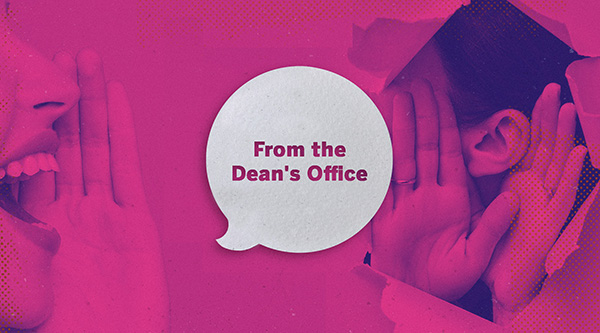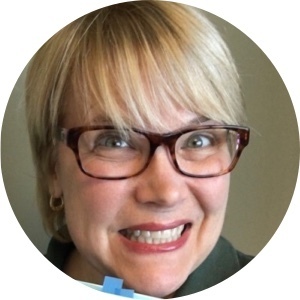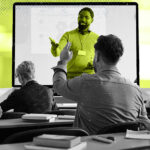We spoke with Gulbrandsen about how Rasmussen communicates the value of online education to prospective students, just how far online learning can go, and why higher education needs to shake the dust off and catch up to the times.
(Editor’s note: This interview has been lightly edited and condensed for clarity.)
Volt: Rasmussen has been teaching online as its primary vehicle of delivery a good deal longer than schools that are switching now out of necessity, for however long. What was the shift from in-person to online learning like at Rasmussen?
Dr. Gulbrandsen: We talk about this shift that so many institutions have had to make to online and people who were not prepared for it. It’s probably been about six years ago now that I had to have that conversation with my on-campus faculty. I had to call them in and let them know that their schedules would be moving online and they were not happy campers. They didn’t get nasty, but I’m sure they were thinking bad thoughts. But I laugh because, for example, our mathematics instructor, she said, “Carrie, how could you possibly teach algebra online? You’re crazy. It can’t be done.” Flash forward five, six years later, you couldn’t drag her back to the campus. I don’t think I could offer her a high enough salary to bring her back to campus because she’s thriving and her students are in the online modality.
“I can’t imagine a better environment to learn humanities, to learn literature and music and art, than virtually. I don’t want to see it from 20 rows away. I want to see it up close and personal.”
Volt: How do marketers need to change their mindset to illustrate the value of learning online?
Dr. Gulbrandsen: I think one of the barriers we’re always going to face is students who say, “But I’m paying you tuition to teach me. I’m not paying you to teach myself.” I think the messaging needs to shift to “What you’re paying for is a relevant and appropriate curriculum.” You’re paying for someone to identify for you the necessary competencies for you to be successful either in earning that degree, whatever that degree happens to be, or the skills required to be hired in your chosen field. So whether you’re more liberal-arts focused or more career-focused, what you’re paying for is the knowledge and skills that that degree certifies. And so what higher education is supposed to be doing is designing curriculum. You wouldn’t know how to do that yourself. We’re the experts in that. We’ll do that for you.
And marketers should celebrate the self-directed area of learning and the flexibility, which students like. But we can’t do like we just did in the last few months where we had to throw everybody into the wilderness and hope that they found their way out. What higher education needs to do is get all the infrastructure in place.
Volt: What will higher education look like 10 years from now – will it be significantly more online?
Dr. Gulbrandsen: I sure hope so. With all due respect to my colleagues in academia, I think sometimes we get on our high horse and we say, “Well, it must be done this way,” and, “Because we’re so learned and everyone else is not and this is the way higher education has always been and you don’t deserve a seat at this table unless you go through all of these hoops, you suffer the way we suffered.” I honestly think there’s a big piece of that. And so helping people overcome that is key.
And I would like to say one of the things that we all need to stop doing is calling it an online degree or an online program because it implies ‘less than.’ Why don’t we just call it a degree? It will always be stigmatized until we remove that qualifier of being online.
Volt: How does Rasmussen prepare its faculty to teach online, and to enable them to do that successfully?
“Let’s define what community means. Do I have to physically see you? Do we have to feel each other’s breath to develop a sense of community?”
Dr. Gulbrandsen: It’s one of those things that we had formal trainings for, but one of the things that was most helpful for our faculty was that I and others hosted informal training sessions in WebEx, the platform that faculty use to deliver lectures and things like that. I called it sandbox time and I think that’s what’s so critical for our faculty. I just said, “Okay, I’m going to be in my WebEx room. From this time to this time three days this week. Here’s my link. Join me if you want to just play around.” It’s a safe space where faculty can come and practice doing stuff so they don’t look foolish in front of their students, because that’s the worst. As a faculty member, students look to you as always having all the answers and when you don’t have the answers, it’s damaging for that relationship. We don’t like to talk about it, but it’s true. We don’t like to see our faculty members, any of us, struggle to find the answer to something. We want to have that confidence in them.
Volt: How do you foster that sense of a college community online for students who aren’t going to set foot on campus?
Dr. Gulbrandsen: I think community is a huge issue, but the same process exists for the question of how do we replicate online that which seems to happen or exist on campus? So the counsel that I would give anybody is to say, what do you really want to accomplish? Let’s define what community means. Do I have to physically see you? Do we have to feel each other’s breath to develop a sense of community? So that’s what I would urge anybody trying to replicate that community that can develop in the physical world to really break it down and say “What does that mean?” As corny as this sounds, maybe have some brainstorming sessions with faculty staff, your teams, whatever it is to define what that word really means when we think of community. It’s shared emotion. It’s shared experiences. It’s humor. It’s ‘let’s think together.’
“As a faculty member, students look to you as always having all the answers and when you don’t have the answers, it’s damaging for that relationship. We don’t like to talk about it, but it’s true.”
Volt: That brings up the question of, how do you foster connections outside of the classroom with students, or even students and faculty, to create those bonding moments that may have nothing to do with the academics at all?
Dr. Gulbrandsen: For faculty it’s a balance, right? I’ve been doing this a long time, so it’s easy for me to create videos every week like I did when I was teaching at another institution, even when they’re not required. I would create videos every week because I want students to see me and they kind of know what I’m doing, but I’m okay with when I mess up and I’ll purposely not re-record over that because I want students to see me make a mistake and then quickly recover and not let it slow me down. I want to demonstrate that behavior, but it also shows them vulnerability. It shows that I’m human. I won’t dwell on it, but if my puppy’s acting up I’ll pick her up and so I’ll put her in front of the camera and say, “Here’s the puppy. She’s sorry she’s bothering you.”
Volt: You can see how lectures can translate and be translated to online environments, but how do you do such technical, hands-on courses, like physical therapist assistant or surgical technicians, virtually?
Dr. Gulbransen: Right off the bat, let’s say there are some things that you just can’t do online. But there’s a process that we need to go through before we make that final determination, and involves asking the question of why can’t we? What do we want to accomplish? I think of a general education biology class that involves, traditionally, students coming to campus and they have the microscopes and they’re looking at different cells and stuff. Well, what is it about biology where we all have to sit 40, 50 people in a room shoulder to shoulder? Why do I need to do that to learn biology? Well, you have to look into the microscope. Oh, that’s true – or is it? In 2020, in an undergraduate general degree, do they really need to look into a microscope? So, look at those learning objectives and decide what’s most important and focus on the benefits of it.
So we look at something like a surgical technologist, there must be thousands of instruments. I was shocked at how many instruments there are. Well, is it possible that at least in some of the beginning classes, if students had their own equipment, they could learn to use that equipment on their own? A lot of it is the handling of it and the weight of that instrument. “Well, I can do this in a classroom or I can do this on my own, holding my hands up to the camera. Okay, now Carrie, turn it to the left a little bit. Now, put your two fingers here…” And so on and so forth.
“Why don’t we just call it a degree? It will always be stigmatized until we remove that qualifier of being online.”
Volt: What do you think has made Rasmussen successful in online education?
Dr. Gulbrandsen: I think because we’re practically fearless in that regard. We are committed to student learning first and foremost, but probably secondly, it’s innovation and saying “Okay, that’s great, now what do we do?” We’re always thinking of the next thing because we are career-focused. We are not, to be frank, the place to come and find yourself. If you’re not sure what you want and what you’re going to do and you say, “Maybe I’ll just take this class over here and I’ll take this class over there,” that won’t really work. We are hyper-focused on career goals: “This is how you want to change your life. This is how you want to support your family. Let’s go.”
Volt: So do you think that online education is for people who are career-focused and in that sense, almost more results-focused than people who are looking for a kind of more open-ended, holistic higher education experience?
Dr. Gulbrandsen: No, I don’t think that. I think it’s just maybe the personality types that gravitate toward a career-focused education. I was an English teacher for many years and so my dream class is to teach a humanities course, but my degree is not in humanities. So I can’t imagine a better environment to learn humanities, to learn literature and music and art, than virtually, because then I can control it and I can have it all going at once and it’s a visual medium. I don’t want to see it from 20 rows away. I want to see it up close and personal. So I think it’s about how these things are approached, and we have too many folks in higher education that are saying that “It can’t be done, it shouldn’t be done.” Well, “Why not?” “Well, because we’ve always done it this way.” Stop that. You always need to have someone at the table who says “Why not?”




